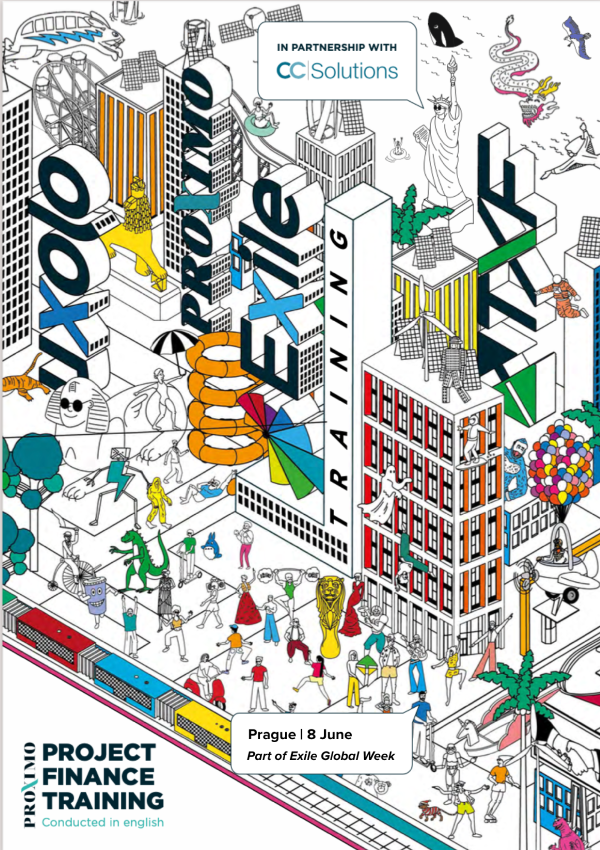Proximo Weekly: COPing with the devil in the details
COP 26 felt like a watershed this week – at least in terms of cohesive global strategy. But there is still a vast amount of work to do at the granular regulatory level to facilitate those sweeping policy statements.

Excitement at COP 26 over upped financial assistance by G20 countries to developing countries to deal with climate change might have been higher this week had those same countries already delivered on their $100 billion Paris Agreement pledge – but they haven’t and still don’t plan to until 2023.
So of all the headline grabbing numbers emanating from the aggregated COP 26 PR machine this week, one really stands out – Mark Carney’s claim of $130 trillion of private finance committed to science-based 2050 net-zero targets and near-term milestones through the Glasgow Financial Alliance for Net Zero (GFANZ). Not because of its size, but because it may produce what government’s appear to struggle with – acceleration.
“The architecture of the global financial system has been transformed to deliver net zero,” said Carney. “We now have the essential plumbing in place to move climate change from the fringes to the forefront of finance so that every financial decision takes climate change into account. Only this mainstream focus can finance the estimated $100 trillion of investment needed over the next three decades for a clean energy future.”
GFANZ comprises 450 banks, insurers and asset managers of which investment managers account for $57 trillion of the pledged assets, banks $63 trillion and asset owners $10 trillion. Carney’s claim attracted concern from a variety of critics – not least that banks still finance certain fossil fuels. But the very act of putting GFANZ together and setting a verifiable agenda is progress – GFANZ members are required to set science-based near-term targets within 12-18 months of joining, and more than 90 of the founding institutions have already done so. All members will report their progress and financed emissions annually, and will review their targets every five years.
But while the “plumbing” may be in place, it still needs considerable fettling. Project finance in all its debt guises should have a large role in GFANZ, but with Basel regulations the way they are, that role has regulated capital limits.
While Basel is considering how to measure and reduce the financial-stability risks stemming from climate change – most notably the growing potential for stranded fossil fuel-linked assets during the energy transition – it should also be considering how to free up regulatory capital for project finance lenders in transition and future renewables sectors. While some argue this would incentivise less due diligence and more chance of irresponsible bank lending to start-ups in untested markets – understandable given memories of 2008 still linger – the reality (one that is confirmed annually by S&P) is that project lending – because of the tenors of debt on offer – has always been well disciplined, with a history of very low default rates and high recovery rates that survived both fallout from 2008 and Covid-19 and was established long before the last round of Basel regulations came in.
Similarly, upping banks’ risk weighting for certain fossil fuels projects could be equally detrimental. The world is not going to be able to do without gas overnight, nor are politicians going to up carbon prices to the point consumers are significantly hurt. Given those caveats, project finance lenders – whether banks or specialised institutional investors – are arguably better placed than regulators to decide levels of project default risk and the tenors they are willing to lend at given the 2050 net zero target.
Another set of basic plumbing issues continues to hold back the development of blended finance. Mixing and matching multiple stakeholders – typically DFIs, ECAs, charities, impact investors and commercial lenders – with different objectives and goals is key to blended finance. Bringing them together and finding the optimal structure for financing projects is a major hurdle, particularly with regard to the allocation of risk and return among the various financiers and their respective objectives. On the one hand, excessive concessionality can run the risk of distorting or disrupting the markets, on the other, frugal concessionality lacks the ability to entice private investors to appropriately replicate similar transactions in the future.
Commercial viability over time is also an important consideration in structuring a blended deal. “When a project is designed, the blended finance portion has to be visibly fizzling out, and from a certain point, it has to become commercially viable,” says Albena Melin, deputy director, donor co-financing at the EBRD. “We assess the potential development impact of a project, and if we're envisaging a huge development impact, we might need to allow for some higher concessionality to make it happen. Not 20% but maybe 30% or 35%, which is a huge amount of concessional financing. But then you have to refinance it later on, on a purely commercial basis before the project is over. So, the whole blended finance part stops much earlier and you must make an assessment about how much development impact can be achieved. And does the larger development impact actually justify a higher amount of blended finance initially? These are all questions we and other DFIs are grappling with when investing in the private sector in transition countries and emerging markets.”
In October 2021, the Investor Leadership Network (ILN), in collaboration with The Rockefeller Foundation, released a Blended Finance Blueprint, proposing seven specific actions the blended finance community can take to reduce risk and increase sustainable investments in emerging and frontier economies. The report asks public sector actors MDBs, governments, and foundations to change how they involve the private sector in financing global sustainable development. “Private investors face an unattractive risk-return nexus; they lack easy access to crucial information: example, which projects the public sector is planning that they could take part in, and what they entail. Exposure to the risks of investing in less mature markets, with insufficient insurance available, deters them as well,” the report says.
The solutions presented by the ILN’s blueprint include: creating a rolling pool of funds offering first or second-loss guarantees so the private sector can cover currently hard-to-insure risks such as those relating to regulatory changes, taxation, and reputational risk; creating a separate facility to help with one of the biggest obstacles, foreign exchange risk; creating a detailed shared database of projects that MDBs are screening so that private investors can express an interest early on; setting up a searchable virtual toolbox so investors can more easily find the plethora of currently little-known risk-hedging instruments that MDBs and philanthropic organizations offer; give the private sector full access to emerging market risk data and information.
COP 26 will have been a success if governments and regulators deliver on the promises made over the past week. But despite all the driving strategies, gear change will only come at the granular level.
Selected news articles from Proximo last week
NORTH AMERICA
Carlyle Group reprices Liberty and Patriot debt
Carlyle Group – via Hamilton Projects Acquiror LLC – has signed on a repricing of the loan it raised in June 2020 to finance the acquisition of the 829MW Liberty Energy Center and 842MW Patriot Energy Center in Pennsylvania.
EUROPE
NeuConnect out to banks for project loan
Financing for the €1.8 billion ($1.61 billion) 1.4GW NeuConnect interconnector project between the UK and Germany was launched to lenders in late October.
ASIA-PACIFIC
GIP raising debt for Pluto LNG 2 stake
Global Infrastructure Partners is raising a significant debt facility to back its potential acquisition of a 49% stake in Woodside Energy’s Pluto LNG Train 2 project in Australia.
MIDDLE EAST & AFRICA
Saudi Arabia invites interest in 3,600MW Taiba power project
The Saudi Power Procurement Company (SPPC) has invited developers to submit expressions of interest in the project to develop a 3,600MW gas-fired independent power producer at Taiba, located near Medina in the western province of the kingdom.
LATIN AMERICA
Seven bidders line up for Chile's Route 78 concession
Chile's Ministry of Public Works has received seven offers for the Second Santiago-San Antonio Highway Concession, Route 78, which will modernise and expand a 132km highway connecting Santiago with San Antonio.
The Proximo Membership
Join a brand new community of project finance professionals getting unrivalled access to unique analysis, market data and a global portfolio of expert industry events in the energy and infrastructure space. Click here to find out more





